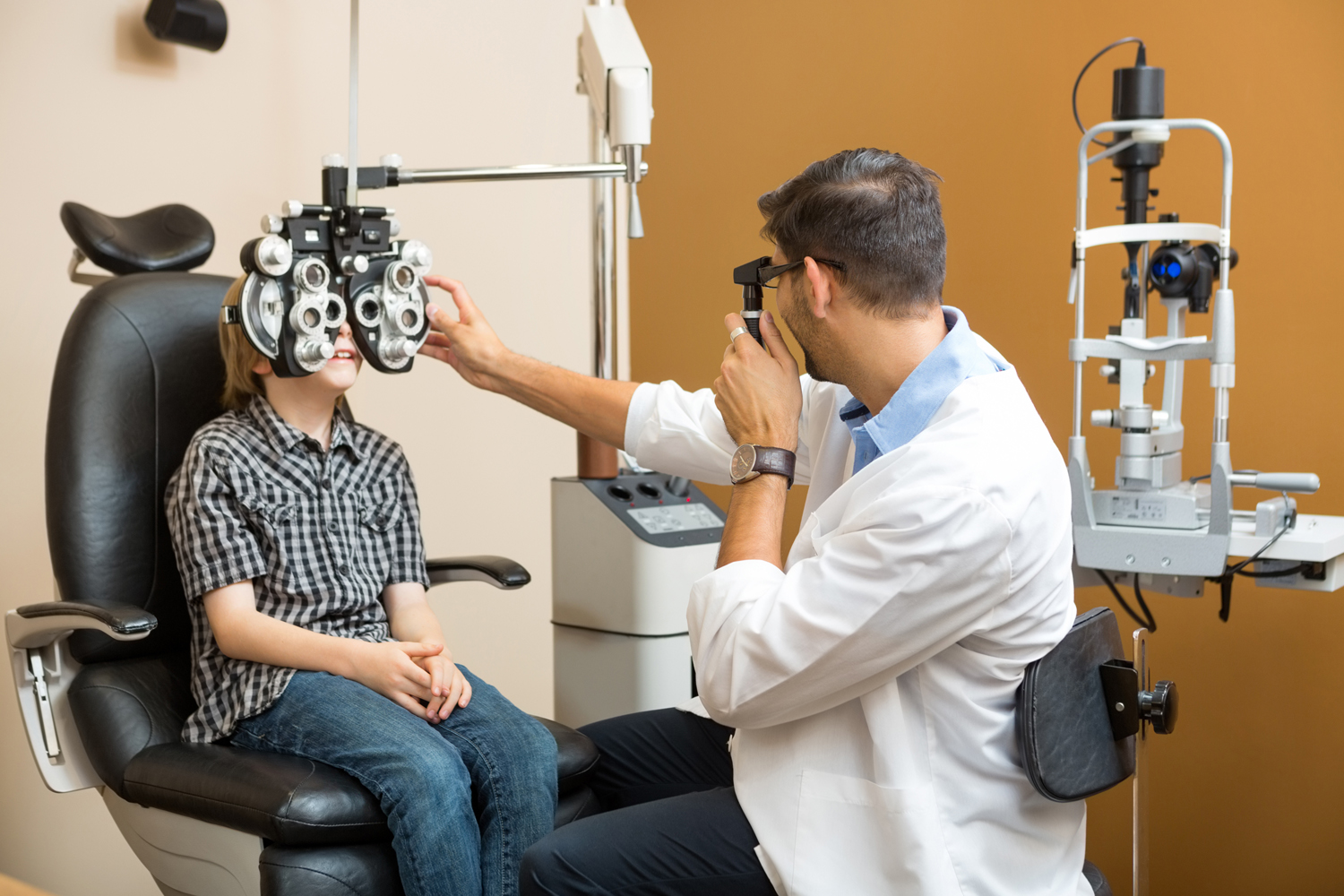The Relevance of Regular Examinations with an Eye Doctor Optometrist
The Relevance of Regular Examinations with an Eye Doctor Optometrist
Blog Article
Recognizing the Comprehensive Role of an Eye Doctor in Modern Eye Treatment
With advancements in technology and an enhancing emphasis on preventive treatment, eye doctors are integral in detecting and managing chronic eye conditions, while also engaging in early illness detection. Exactly how do these responsibilities intersect with their duty in advertising total eye wellness, and what does this mean for patient results in a joint medical care setting?
Expanded Extent of Technique
Recently, the duty of eye doctors has developed dramatically, with many professionals now embracing an expanded scope of method that prolongs beyond traditional eye evaluations. This evolution mirrors the expanding acknowledgment of eye doctors as main health care carriers in the area of eye treatment. Their responsibilities now incorporate a wide variety of services, consisting of recommending medicines for eye problems, taking care of chronic eye conditions, and executing minor operations. This change has been driven by advancements in optometric education, boosted medical training, and the raising demand for detailed eye treatment services, especially in underserved areas.
Even more, eye doctors are now more associated with joint care, functioning very closely with ophthalmologists, primary care doctors, and other health care specialists to make certain holistic person care. This interprofessional cooperation is important in managing complex situations that need a multidisciplinary technique. Furthermore, optometrists are playing a pivotal function in public health and wellness initiatives, such as vision testings and eye health education, targeted at boosting community health results.
The expanded scope of practice for optometrists not just enhances their ability to give thorough treatment but additionally addresses the expanding need for obtainable and efficient eye treatment solutions, contributing to general healthcare enhancements.
Very Early Condition Discovery
Early detection of eye diseases is increasingly ending up being a focal point in the broadened function of eye doctors. As primary eye treatment providers, optometrists are distinctively positioned to determine early signs of eye problems such as glaucoma, macular degeneration, diabetic person retinopathy, and cataracts. This crucial role is critical, as very early medical diagnosis can considerably improve the management and prognosis of these problems, potentially stopping vision loss and boosting individual end results.
Eye doctors use extensive eye evaluations to spot refined changes in vision and eye wellness. The ability to recognize early indicators of systemic health and wellness issues, such as high blood pressure and diabetes, with eye indicators additionally underscores the significance of normal eye exams.
Furthermore, eye doctors play an important function in client education, emphasizing the importance of regular eye evaluations as part of total health and wellness upkeep. By cultivating a positive approach to eye care, optometrists contribute dramatically to public wellness, making certain conditions are caught and handled efficiently prior to they can advance.
Advanced Diagnostic Techniques
Advanced diagnostic strategies have reinvented the method of optometry, allowing professionals to detect and keep track of eye illness with extraordinary accuracy. These advancements have actually transformed the optometric landscape, enabling extra advanced analysis and intervention strategies. Technologies such as optical coherence tomography (OCT) supply high-resolution, cross-sectional photos of the retina, facilitating early discovery of conditions like glaucoma and macular deterioration. This non-invasive strategy has actually ended up being crucial in modern optometry, providing thorough understandings right into retinal layers.
One more vital advancement is digital retinal imaging, which catches comprehensive sights of the retina using high-definition electronic cameras. This technology is vital in determining changes in retinal structure in time, consequently assisting in the administration of problems like diabetic retinopathy. Aesthetic field screening, enhanced by computer-aided systems, permits accurate mapping of a client's area of vision, essential in tracking and diagnosing glaucoma development.
Corneal topography, one more remarkable analysis tool, generates comprehensive maps of the cornea's surface. This is particularly helpful in fitting contact lenses and planning refractive surgical procedure. These innovative analysis strategies collectively make it possible for eye doctors to provide aggressive, targeted care, guaranteeing far better individual end results and strengthening their critical function in eye wellness administration.
Handling Chronic Eye Conditions
Managing chronic eye problems is a foundation of optometric care that requires a comprehensive understanding of numerous ocular illness and their long-lasting effects. Optometrists play a critical duty in tracking, managing, and diagnosing problems such as glaucoma, diabetic retinopathy, and age-related macular degeneration. These conditions, if left without treatment, can result in considerable aesthetic problems or blindness, highlighting the essential importance of recurring treatment and management.
Eye doctors utilize a series of diagnostic tools, including optical comprehensibility tomography (OCT), aesthetic field testing, and fundus photography, to examine the progression of these chronic problems. By very closely keeping track of changes in eye health and wellness, optometrists can change treatment plans to minimize illness progression. This may include prescribing medications, advising way of living adjustments, or coordinating with ophthalmologists for surgical treatments when needed.

Role in Preventive Treatment
Precautionary care is a fundamental aspect of optometry that concentrates on keeping eye health important link and preventing the onset of ocular diseases. Optometrists play an important role in very early discovery and avoidance, utilizing routine eye evaluations to recognize threat elements and subtle adjustments in eye wellness. Eye Doctor. These assessments are not merely regarding vision adjustment however include a thorough assessment of eye functions and structures, enabling the identification of conditions such as glaucoma, cataracts, and macular useful site deterioration at an early stage
In enhancement to diagnostics, optometrists educate individuals on way of life selections that advertise eye health, such as appropriate nourishment, UV protection, and the significance of routine eye exams. They advise on the right usage of electronic devices to avoid electronic eye strain, an expanding issue in the digital age. Eye doctors likewise give advice on protective glasses for work and entertainment tasks, mitigating the risk of injury.
Preventative eye treatment encompasses systemic health problems that manifest in the eyes, such as diabetes and hypertension. By collaborating with other medical care professionals, eye doctors contribute to holistic individual care, highlighting the interconnectedness of eye and systemic health and wellness. This aggressive technique is necessary in safeguarding aesthetic skill and total wellness.
Verdict
Optometrists currently occupy a crucial role in contemporary eye care, defined by an increased extent that includes detecting and managing chronic eye conditions, prescribing medicines, and carrying out small operations (Eye Doctor Optometrist). Their know-how in very early illness discovery is improved by sophisticated diagnostic techniques such as optical coherence tomography and digital retinal imaging. By highlighting precautionary treatment and person education and learning, eye doctors look what i found contribute substantially to overall eye health, working together with other health care specialists to make sure extensive and effective client end results

In enhancement to diagnostics, eye doctors educate patients on lifestyle choices that promote eye health, such as appropriate nourishment, UV defense, and the value of routine eye check-ups.Preventive eye care expands to systemic health concerns that manifest in the eyes, such as diabetes mellitus and hypertension.Optometrists now occupy a critical duty in modern eye care, identified by an increased extent that consists of detecting and managing persistent eye conditions, recommending drugs, and performing small surgical treatments.
Report this page